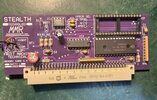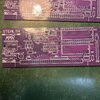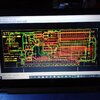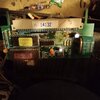I've I've recently built my first pcb in express pcb. It was reasonably expensive to get the gerbers but I went ahead and was very happy with my board.
I was recommended easy EDA to try but looking at it it seems you have to start a build with a schematic design? Or is there a physical board design like expresspcb?
What I'm doing is reverse engineering a big damaged old 90s arcade board I don't have a schematic to work from. I can physically remake a board much easier than build a whole schematic so I'm looking for some software that's right for me if anyone can help? Just looking for the CAD PCB side not a schematic
Few pics of my first attempt remake project (small size looking to do the same but a much bigger board)
I was recommended easy EDA to try but looking at it it seems you have to start a build with a schematic design? Or is there a physical board design like expresspcb?
What I'm doing is reverse engineering a big damaged old 90s arcade board I don't have a schematic to work from. I can physically remake a board much easier than build a whole schematic so I'm looking for some software that's right for me if anyone can help? Just looking for the CAD PCB side not a schematic
Few pics of my first attempt remake project (small size looking to do the same but a much bigger board)




